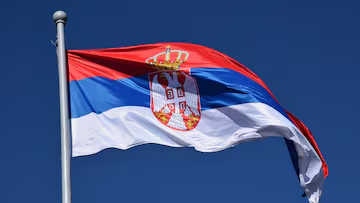vcdiversity.org – The Grand Principality of Serbia, a medieval state that emerged in the Balkans during the 12th century, underwent a significant period of expansion that marked its zenith in terms of territorial reach and political influence. This era was characterized by strategic military campaigns, diplomatic alliances, and administrative reforms that collectively contributed to the growth and consolidation of Serbian power in the region.
The Rise of the Nemanjić Dynasty
The expansion of the Grand Principality of Serbia was largely driven by the rise of the Nemanjić dynasty, which came to power in the late 12th century. Under the leadership of Stefan Nemanja, the founder of the dynasty, Serbia began to assert its independence from the Byzantine Empire and embarked on a path of territorial expansion. Nemanja’s successors, particularly his son Stefan the First-Crowned and grandson Stefan Uroš I, continued this policy, expanding Serbian control into regions such as Zeta, Raška, and parts of Macedonia.
Military Campaigns and Diplomatic Alliances
The period of expansion was facilitated by a series of military campaigns that were both defensive and offensive in nature. The Serbian army, under the command of capable leaders like Stefan Uroš II Milutin, engaged in battles against neighboring states and the Byzantine Empire, securing strategic territories and fortifications. These military successes were complemented by diplomatic efforts, as the Serbian rulers forged alliances with other European powers, including the Kingdom of Hungary and the Republic of Venice, to counterbalance Byzantine influence and secure their gains.
Administrative Reforms and Economic Growth
To effectively govern the expanded territories, the Serbian rulers implemented a series of administrative reforms. They established a more centralized system of governance, with local administrators answerable to the Grand Prince, and introduced legal codes that unified the laws across the realm. These measures helped to integrate the newly acquired territories into the Serbian state and fostered a sense of Serbian identity among the diverse populations.
Economically, the Grand Principality of Serbia benefited from its strategic position on trade routes linking the Byzantine Empire with Central Europe. The rulers encouraged the development of trade and commerce, minted their own currency, and established market towns that attracted merchants from across the region. The economic prosperity contributed to the growth of Serbian cities and the patronage of arts and culture, leaving a lasting legacy of Serbian medieval architecture and literature.
The Culmination of Expansion
The zenith of Serbian expansion was reached during the reign of Stefan Dušan, who was crowned Emperor of Serbs and Greeks in 1346. Under Dušan’s rule, the Serbian Empire reached its greatest territorial extent, encompassing much of the Balkans and challenging the Byzantine Empire for supremacy in the region. Dušan’s Code, a comprehensive legal framework, further solidified the administrative structure of the empire and its governance.
Conclusion
The period of expansion of the Grand Principality of Serbia was a remarkable chapter in the history of the Balkans, showcasing the military prowess, diplomatic acumen, and administrative capabilities of the Nemanjić dynasty. Although the empire would eventually fragment after the death of Stefan Dušan, the legacy of this era of expansion left an indelible mark on the Serbian nation and its historical identity.
